Today I went back to Sterling to look at more archives and manuscripts. I flipped through some more of Denison Olmsted’s journals, and found this adorable page:
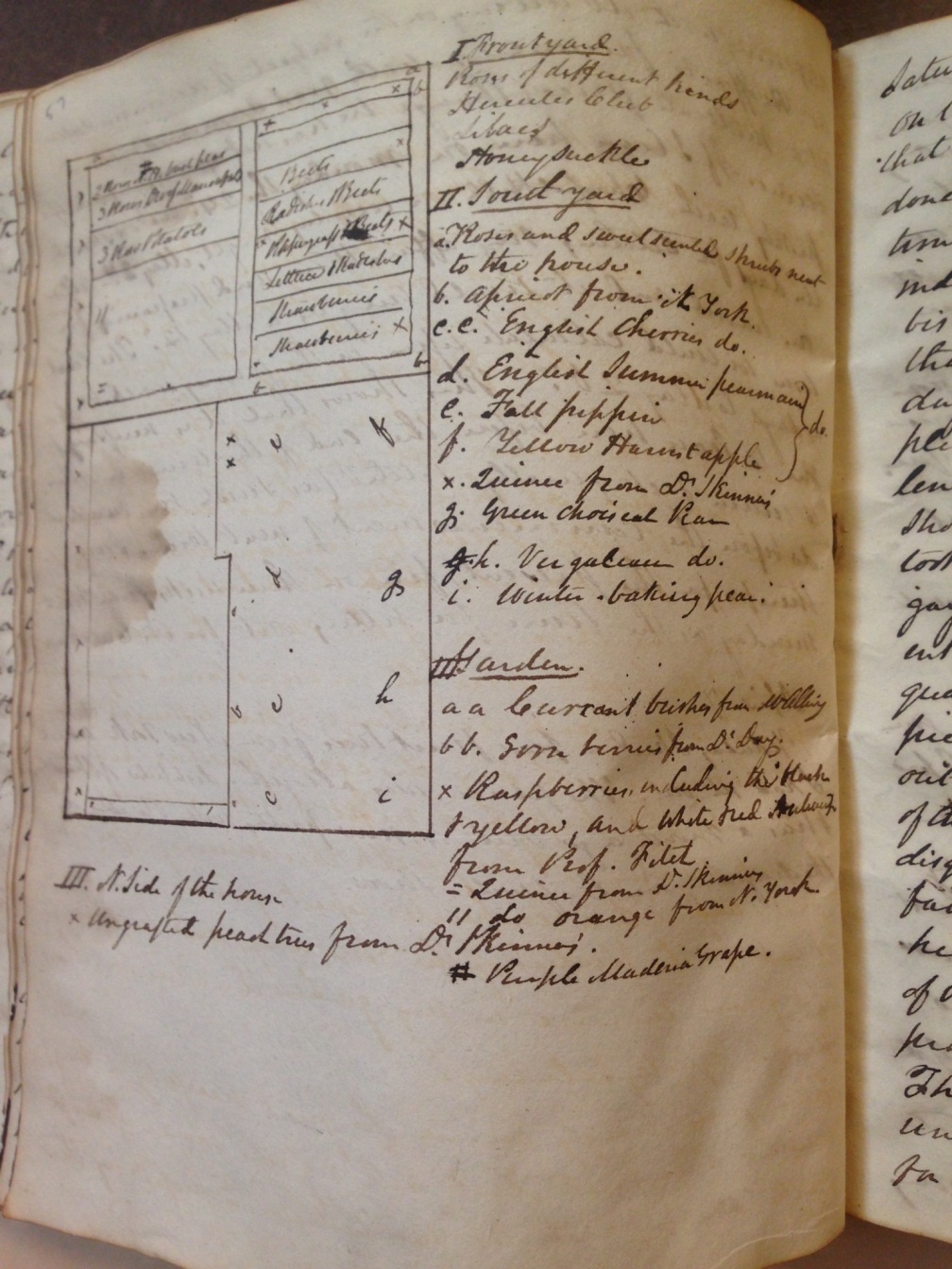
He was planning a garden! I love it!

Today I went back to Sterling to look at more archives and manuscripts. I flipped through some more of Denison Olmsted’s journals, and found this adorable page:

He was planning a garden! I love it!
My latest project has involved researching some archaeological artifacts that the HSI division has recently acquired. Some of these things are ancient tools, while others are simply decorated with things like stars and planets and other astronomical symbols.
In order to figure out what various circles and squiggles on coins and jewelry were supposed to mean (if anything), I spent a lot of time just Googling what sort of symbols various ancient peoples used to represent things like the sun and planets. This searching sent me down a number of bizarre internet rabbit holes, onto the sort of websites that are definitely not JSTOR when it comes to credibility. It will probably come as a surprise to no one that the internet is full of people who are full of theories about the supernatural, astrological, mystical, etc., etc., etc., connotations and powers of just about every kind of ancient symbol you can think of (and probably some you didn’t know existed).
This sort of approach to the ancient world is, admittedly, really fun. It’s exciting to think that the people who were around a few thousand years ago were living in this magical world where everything was imbued with transcendent meaning. The website I linked to above invites its visitors to explore its contents by clicking on a symbol that inspires them (based, I guess, on its visual appeal). There’s also a huge internet market for jewelry with ancient symbols, often promising to confer some kind of power onto the wearer. To be fair, there were plenty of things in the ancient world that really were considered magical (amulets, curse tablets, and the like). And for many groups of ancient people, magic and symbolism were extensions of religious practice, which was itself a perfectly ordinary part of life.
The tendency to make everything about ancient people mystical and mysterious can be fun and innocent, but it can also get pretty sticky: cultural attitudes and customs vary between civilizations and time periods, and it’s important to keep that in mind. However, acknowledging a cultural difference is not the same as the complete infantilization or romanticization of a group of people. When we sensationalize or romanticize a facet of a particular society’s culture, we impose modern values on a society that existed completely outside such a cultural framework. If we turn ancient people into a bunch of mumbo jumbo-peddling magicians, we make the assumption that what they were doing was somehow unusual or even taboo. Something like a curse tablet seems pretty crazy to us today, but all the evidence we have from ancient Greece and Rome suggests that they were quite common and mundane (they cover everything from business rivalries to petty thefts, from love and relationships to sporting events). Pentagrams were used to symbolize the Venus (the goddess was an important figure in Roman mythology and identity formation), and really don’t have anything to do with some kind of secret Satanic worship.
My favorite anti-climactic ancient symbol appears on a Roman coin depicting Tarpeia, covered in shields. The coin includes a star and crescent, and the best explanation I could find for its presence is that some people think that this particular legendary event occurred at night.
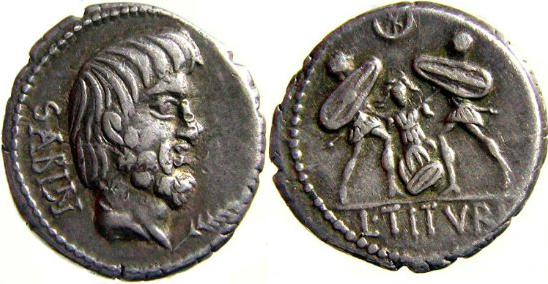
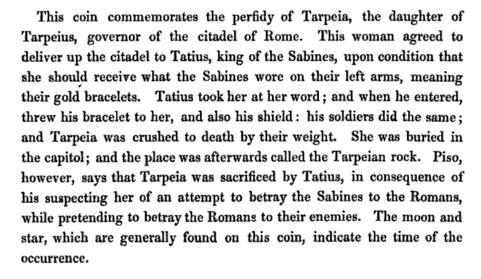
Furthermore, stars and planets are everywhere, even in modern objects. The United States’ flag has a star for each state, and the Chicago flag has four stars, each symbolizing an important event in the city’s history.

My hometown has the coolest flag.
I don’t think it’s a good use of anyone’s time to try to come up with a unified and proven theory of why stars and other astronomical symbols have remained so popular. Maybe it’s aspirational? Maybe I’ve got it all wrong and everyone is secretly some kind of celestial wizard? Maybe sometimes things just happen at night? I don’t think there’s one right answer (except I do think that the wrong answer is “EVERYONE WAS A WIZARD 2,000 YEARS AGO”). Human experience is diverse, and always has been. In order to try to understand people who lived differently than we do, all that we can do is try to consider things from their perspective without first plunging headfirst into wild theories about wacky ancient people and their funky star rituals. (It’s the least we can do for people who lived without electricity. Give them a break.)
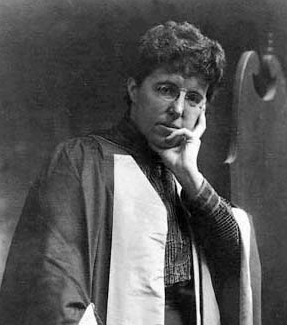
Charlotte Angas Scott, looking so contemplative and good at math
While transcribing more of the Sherman notebook, I came across a mention of something called the Mathematical Tripos. I had no clue what it was, so I Googled it. According to its Wikipedia page, it’s a really hard (and old and prestigious) math exam students of mathematics take at Cambridge (I’m paraphrasing, but you get the gist).
Ok great, but….so what?
Like most old and prestigious things, women were not allowed to participate until relatively recently. The first woman to take it was Charlotte Angas Scott, in 1880 (and even then, she only managed it by obtaining “special permission”). Our pal Charlotte was a mathematical wizard and earned the eighth highest score that year, but that still wasn’t enough to earn her any official recognition. According to Wikipedia…
She came eighth on the Tripos of all students taking them, but due to her sex, the title of “eighth wrangler,” a high honour, went officially to a male student.[8] At the ceremony, however, after the seventh wrangler had been announced, all the students in the audience shouted her name. Because she could not attend the award ceremony, Scott celebrated her accomplishment at Girton College where there were cheers and clapping at dinner, a special evening ceremony where the students sang “See the Conquering Hero Comes”, received an ode written by a staff member, and was crowned with laurels.[8] After this incident women were allowed to formally take the exam and their exam scores listed, although separately from the men’s and thus not included in the rankings. Women obtaining the necessary score also received a special certificate instead of the BA degree with honours.
First of all, anyone of any gender should absolutely be allowed to earn the title of “wrangler,” because that is just too badass to exclude people from. Secondly, I am completely obsessed with this special ceremony for Charlotte, because everyone should receive laurels and a rendition of “See the Conquering Hero Comes” for sticking it to the man by being good at math.
Thirdly, and perhaps less happily…why couldn’t the almighty organizers of the Mathematical Tripos just include women in the rankings and give them degrees instead of some lame certificate? (I know that the very basic answer to this question is “People were even bigger misogynists a hundred years ago than they are now” but bear with me here.) Keeping women and other marginalized people out of the official means for gaining recognition for their accomplishments completely shuts them out of just about every kind of opportunity you can think of. Unfortunately, in order to get anywhere in this world, you usually have to have been anointed by your field’s mainstream arbiters of merit (whether that’s by getting a degree, a teaching position, a special award, etc.).
Academia is an especially treacherous place for women to try to prove themselves. Even if we’ve stopped barring women from taking exams and earning degrees, there are other, more insidious barriers to women’s success. In graduate school, students are especially dependent on advisors and professors for recommendation and guidance. If an advisor turns out to be a harasser or abuser, a female student can be placed in an impossible position: it can be difficult to get teaching jobs, fellowships, and recognition without the support of an advisor. And if that support is threatened by a gendered abuse of power, what’s a struggling grad student to do? (And while women are most of the people who experience this kind of situation, it can happen to men, too.)
Even on a less institutional level, it can be difficult and profoundly frustrating for women to prove their worth in academic settings. I’ve lost count of the number of times I’ve been interrupted, erroneously corrected, talked over, doubted, or just plain scared out of talking in class because of a male classmate’s entitled behavior. Teachers notice who talks and who doesn’t, and when you can’t get a word in edgewise, it’s much harder to be recognized as a good student and thoughtful contributor.
It’s not enough for women to just be good at something. It is vital that we gain the recognition we deserve for our talents and contributions. Otherwise, who’s going to take us seriously?
More laurel wreaths for everyone!
I’ve spent the past two days in the Sterling Manuscripts and Archives Room, looking through old notebooks, lectures, receipts, and records in the hopes of uncovering information about the kinds of scientific instruments in use at Yale during the eighteenth and nineteenth centuries. This information will be useful for expanding our understanding of the instruments in our collection, and it might also be included in an upcoming exhibition about historic scientific instruments.
I literally have hundreds of photographs of this kind of serious archival material. However, the vast majority of it is in illegible old-timey handwriting that has given me two blinding headaches in as many days, so instead I am going to share something completely silly and only tangentially related to the actual research I was conducting. It’s Friday! Let me live!
First, some context: Denison Olmsted was a student, tutor, and professor at Yale during the 1800s. He specialized in “natural philosophy” (basically, science), mathematics, and astronomy. He wrote a bunch of textbooks, was one of the people to make the first American observation of Halley’s comet, and was also a hotshot meteor expert.
He was also lampooned in a strange little poem by Edgar Allan Poe.
In 1962, someone named Thomas O. Mabbott wrote a brief essay on the poem and reproduced the poem itself. Both appeared in one of the boxes of papers I went through today. Mabbott writes that “Poe disliked pretentious scientists.”
Here is the poem, in all its glory:
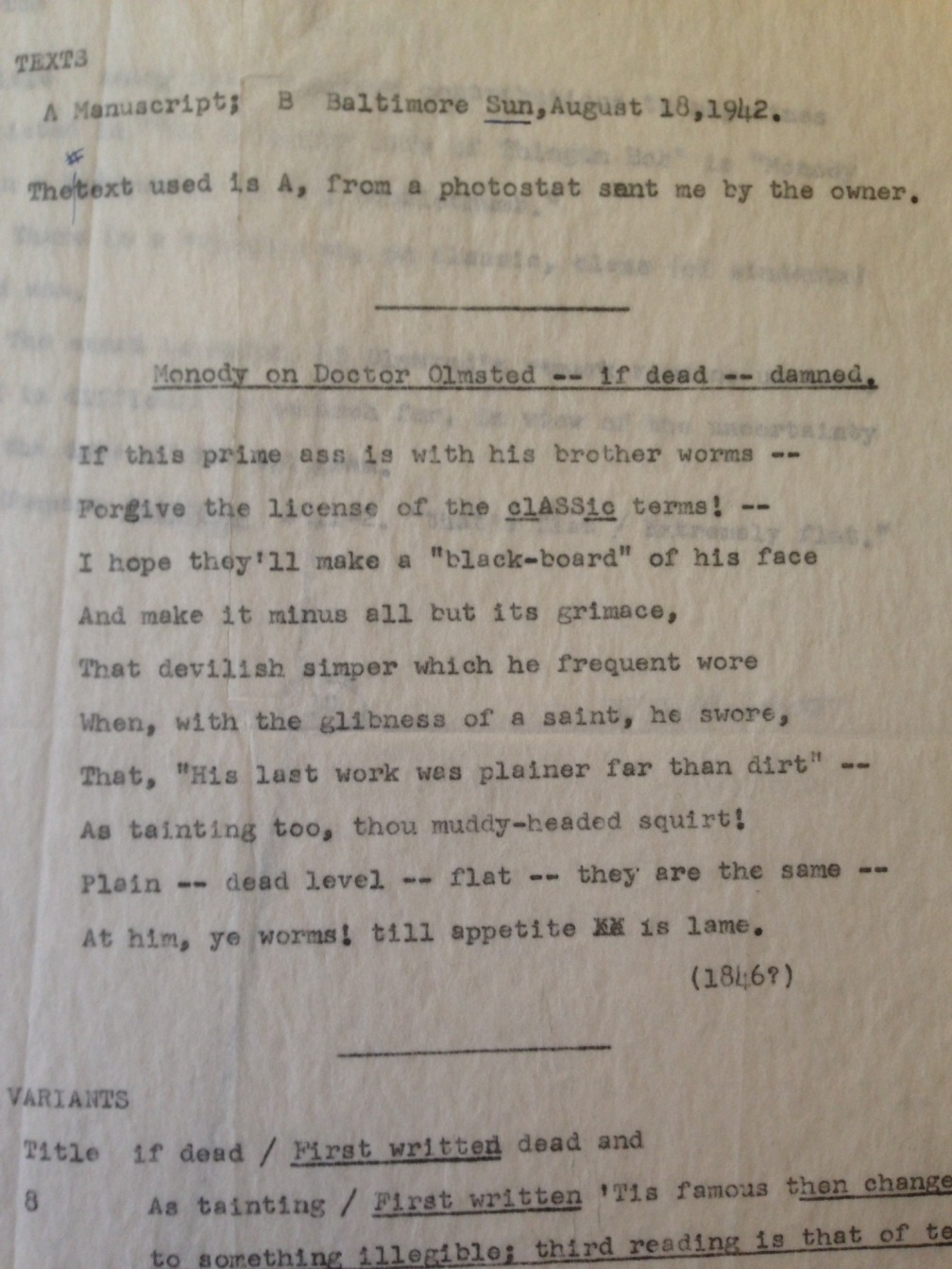
This poem is fascinating on its own, but it is also an indication that Olmsted had some kind of public persona, or at least that his (non-scientist) contemporaries had a reaction to his personality and work. I know I’ve been hitting this point over and over again, but I just keep encountering evidence to support the idea that science and scientists don’t exist inside a vacuum, and they never have. I certainly wasn’t expecting to find poetry today, but there it was!
Also, take heed, scientists: don’t let a poet get the idea that you’re a pretentious jerk.
I’ve spent the last few days going through and transcribing the contents of the notebooks of Roger Sherman, who was a student at Yale in the late 1970s and did a bunch of research on the HSI collection (and ultimately made his own catalogue of a few objects).
The thing I find most striking about Sherman’s notebooks is the level of detail he has committed to the page by hand. Sketches, measurements, stories, bibliographic information: all of it is there, in black and blue ballpoint.
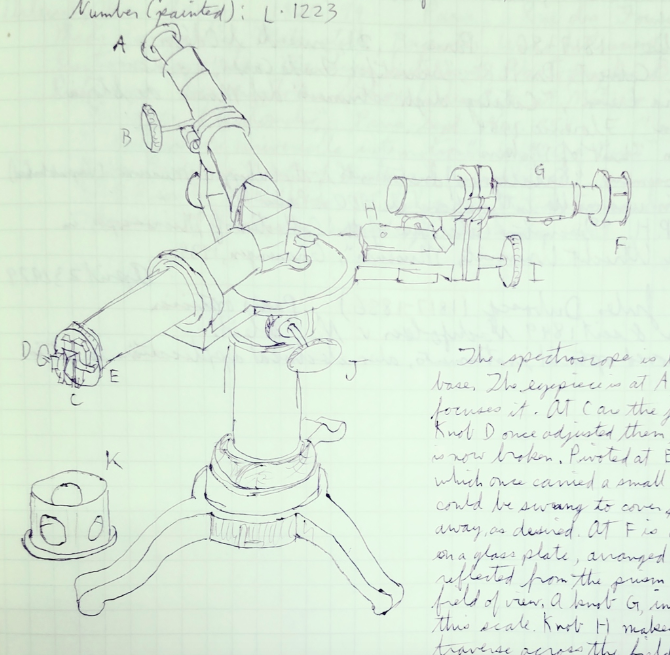
I recently sat in on a meeting of Peabody Museum staff to discuss the renovation of one of its interactive spaces, and several people at this meeting were very excited at the prospect of finding ways to invite visitors to draw objects on display. “When you draw something, you learn it,” someone said.
Sherman had definitely learned every inch of the instruments he researched. He describes what every single part of every machine is for, and his drawings are clear enough that they can be compared with the photographs in the online database we use now.
Sherman’s notes are even more meticulous and detailed than some entries in the database. When researching one object, he includes a paragraph-long explanation about the various rulers of France from 1815 to 1870 in order to make some guess about the date of an instrument made by someone calling themselves “Opticien de S.M. l’Empereur à Paris” (something like “optician to the Emperor at Paris”).

These notes are not just a repository of information: they’re a concise example of the depth and breadth of human knowledge: science, history, art, writing, and research are all intertwined. All too often I hear people describe themselves as “STEM people” or “humanities people,” as if the two are mutually exclusive, or even distinguishable from one another. True, the daily experience of someone who does hard science is pretty different from what I do when I work on my Latin homework, but in the end, human thought and experience cannot be restricted to a single discipline.
I would go so far as to say that it’s dangerous to assume that our own fields exist in their own private realm. It’s when that happens that we lose empathy and interest in what people from different backgrounds have to say. Knowledge is interesting by itself, but it only becomes important when we place it in a broader context.
So many of the objects in the Historic Scientific Instruments collection are beautiful and expensive nineteenth century instruments from England. This makes a certain amount of sense: science, like a lot of fun stuff (voting, land ownership, stand-up comedy, etc.) used to be Rich White Dudes Only. Rich white guys, were, of course, the vast majority of the people buying and using scientific equipment in this country for an embarrassingly long time (especially at Yale – most of the equipment in the HSI collections was used in Yale classes and labs, and Yale admitted a small number of female graduate students starting in 1892, and Yale College didn’t admit women until 1969. Yale’s first African-American student graduated in 1857, over 150 years after Yale was founded in 1701). Even museums used to be a rich guy’s occupation: yesterday I learned about Cabinets of Curiosities, which were aristocrats’ private collections of rare and beautiful objects that they shared only with other aristocrats.
I don’t intend to belabor the point: we all know (or at least, we all should know) that institutional sexism and classism and racism are all very much Things that Happened and Keep Happening. The thing that’s bothering me, and the thing I want to write about, is how much I love looking at these objects and kind of wish I could have been alive when everything looked like that.
On a certain level, this is not that unusual. People romanticize the past all the time. The grass is always greener, right? And what’s wrong with a little bit of romance if it gets peopled excited about the past? For example, please enjoy this grainy picture of me in eighth grade being absolutely PUMPED about history because I got to wear this super fun costume:
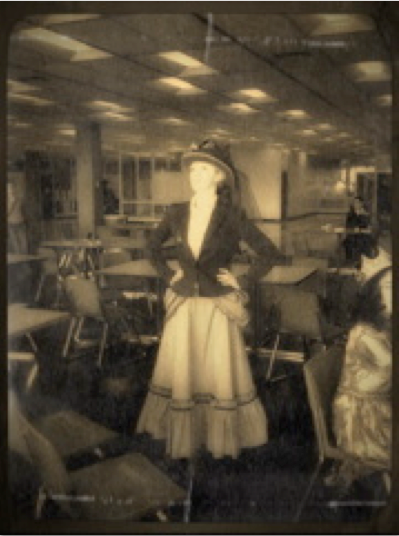
When you work in a museum, or even when you go to visit a museum, it’s easy to focus exclusively on individual pretty objects without placing them in a broader social and cultural context. Sure, we can be dazzled by gorgeous French armillary spheres that show constellations and planets with hand-drawn illustrations and calligraphy or have a good laugh trying to understand how this thing works…

But these objects are much more than just old scientific instruments. They are an invitation to think critically about the past, through lens of the history of science. Of course, we can still be excited about history, and all the scientific advancements that were made with those old scientific instruments. But we have to remember who got left out of that story, and how narrow a community the users of those instruments represent. We can and have done better (but we’re not done yet), and we should take this as a reminder to keep working to make careers and knowledge accessible for everyone, regardless of who they are.
Today I went on a great journey to the Sterling Library archives room. There, we got a chance to look at old lecture notes and class notes from Yale professors and students of the nineteenth century. A great many of these lectures start with lofty rumination on the nature and origins of science, which often mention, in vague terms, “the ancients.” As the students and professors of 1800s Yale would have us believe, ancient people were ignorant and their information inaccurate and imprecise. It’s a kind of cultural chauvinism to suggest that people were simply less intelligent or capable a few thousand years ago – it’s the same kind of thinking that makes people doubt that the Egyptians actually build the pyramids themselves and instead got some very clever aliens to do it for them. I can’t argue that Aristotle was running around with an electron microscope, but I also think there’s room for a more nuanced understanding of the kind of scientific understanding people had in the ancient world. Even if he couldn’t see or measure them, the Roman scholar Lucretius grasped the existence of atoms, and the Romans were incredible architects and engineers (see, y’know, the Colosseum and the aqueducts and their ballistic weapons and and and…).
Ancient people were curious and asked lots of questions about how the world worked. And, let’s not forget that nineteenth century science was not the pinnacle of accuracy and precision. Even now, there are gaps in our knowledge and abilities. We’re learning more everyday, but it’s foolish to think that we’re anywhere close to a complete and unified understanding of everything. I’m doubtful that we ever will, and it actually doesn’t bother me at all. I like knowing that there will always be new questions and mysteries.
Greetings, Internet! This month, I’ll be interning at the Yale Peabody Museum of Natural History, working in the division of Historic Scientific Instruments (HSI). A few things about me…
I’m hoping to learn more than I already do (which is basically nothing) about the way people did science in the past, and what their tools can tell us about the kind of resources and data they had to work with. I’m also hoping to apply some of my knowledge and skills from classics and archaeology to an entirely new discipline. Thinking about the past and engaging with historical evidence is a part of the larger project of pondering what it means to be a person and to connect with the world around you.